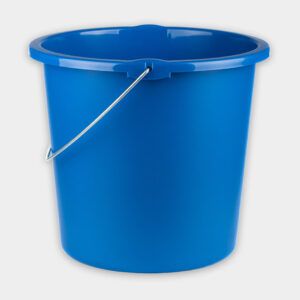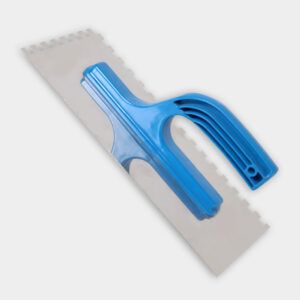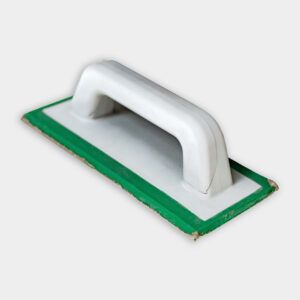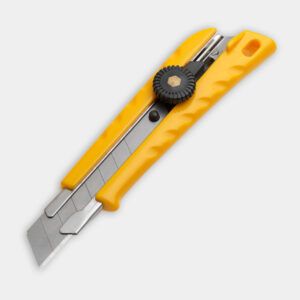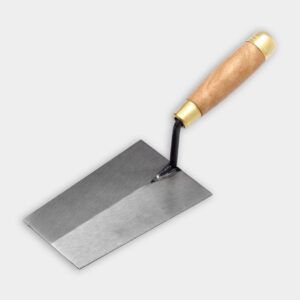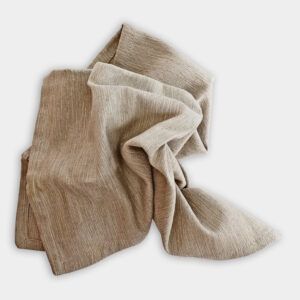Project details
Skill
Cost
Estimated Time
We may be compensated if you purchase through links on our website. Our team is committed to delivering honest, objective, and independent reviews on home products and services.
Tiling a bathroom floor can transform the look of your space while providing a durable, water-resistant surface. This project requires some skill and patience, but with the right preparation and technique, it’s achievable for many do-it-yourself enthusiasts. Contractor Angelo McRae demonstrates how to install a new mosaic-tile floor while offering valuable insights for homeowners tackling this project.
Planning Your Tile Layout
“The most important thing you want to keep in mind when installing a tile floor is the layout,” says McRae. The layout of your bathroom will dictate where you should start tiling.
To start planning the layout, identify the most visible area, such as the space in front of the bathtub or vanity. Measure equal distances from the outside walls to determine your starting line. Use a chalk line to mark your starting point clearly on the floor.
Once you’ve established your starting point, you can plan how to place the tiles. Lay out a row of tiles along the chalk line without adhesive. Adjust the position so uncut tiles are in the most visible areas. Place cut tiles in less noticeable areas, such as along walls or behind fixtures.
You can expect to spend between $1 and $15 or more per square foot on materials to tile your bathroom floor DIY, according to Angi. To reduce waste and save on materials, cut sheets of mosaic tiles in half when working along walls. Use the cut-off pieces to fill in gaps at the end of rows. Pre-cut tiles for areas around obstacles like toilet flanges.
Tile Floor Tools Required
Gather the following tools for your project:
- Drill/driver
- Mixing paddle
- 2-gallon bucket
- Notched trowel
- Rubber grout float
- Utility knife
- Wet tile saw
- Margin trowel
- Grout sponge
- Rags
Preparing the Subfloor for New Tile Floors
Before applying any materials, make sure your subfloor is in good condition. Remove any existing flooring and adhesive residue. Check for damage or unevenness in the subfloor. Repair any issues, and leave the surface clean and dry.
Depending on your subfloor type, you may need to install an underlayment to help promote longevity and durability for your bathroom floor. Here’s what you need to know:
- Use cement board for wood subfloors to prevent moisture damage.
- Apply a waterproof membrane for added protection in wet areas.
- Confirm that the underlayment is securely fastened and leveled.
Mixing and Applying Thinset Mortar
Applying thinset mortar creates a strong bond between the tiles and the subfloor. Follow these steps to prepare your thinset mortar:
- Pour water into a bucket. The amount will depend on the mortar instructions.
- Gradually add the dry mortar mix.
- Use an electric drill with a mixing paddle to blend thoroughly.
- Allow the mixture to slake for a few minutes before remixing.
In the video, McRae shows the correct technique for applying thinset. For mosaic tiles, use a 1/4-inch-by-1/4-inch notched trowel. Hold the trowel at a 45-degree angle to create even ridges. Apply mortar in small sections to prevent it from drying before tile placement. Avoid covering your chalk line with mortar to maintain your reference point.
Setting the Tiles
With your mortar applied, you’re ready to begin setting tiles. Follow these steps for proper tile placement:
- Align the first sheet of mosaic tiles with your chalk line.
- Press the tiles firmly into the mortar using a rubber float.
- Maintain consistent spacing between sheets for even grout lines.
- Use a utility knife to cut individual tiles from the sheet for custom fits.
Cutting Tiles
For a professional finish, you’ll need to cut tiles to fit around obstacles and edges. Use a wet saw for straight cuts along walls and fixtures. Make curved cuts with tile nippers for areas around pipes or toilet flanges. Dry-fit cut pieces before applying mortar to ensure a good fit.
Grouting and Finishing Tile Floor
After allowing the mortar to cure overnight, you can complete your tiling project with grouting.
Mixing and Applying Grout
Follow these steps for successful grouting:
- Mix grout according to the manufacturer’s instructions.
- Use a rubber float to spread grout diagonally across the tile surface.
- Make sure to fill all gaps between tiles, pressing the grout firmly into the joints.
- Remove excess grout with the edge of the float, holding it at a 45-degree angle.
Cleaning and Sealing
Complete your tiled floor with these final steps:
- Allow the grout to set for about an hour before cleaning with a damp sponge, rinsing the sponge frequently.
- Buff away any remaining haze with a soft, dry cloth after the grout has cured.
- Once the grout is dry, apply a grout sealer to protect against stains and moisture.
Troubleshooting Common Tile Bathroom Floor Issues
Even with careful planning and execution, tiling projects can encounter unexpected problems. Here are some common issues and how to address them.
Uneven Tiles
If you notice that some tiles are uneven or not aligned properly, you can adjust the placement while the mortar is still wet. Consider using tile spacers during placement to maintain even gaps between tiles. When installing, press tiles down firmly with a rubber float to ensure they are level.
Excess Grout
Excess grout on the tile surface can be problematic. Use a damp sponge to wipe away grout while it’s still fresh. After the grout sets, use a grout haze remover for any residual film. Be gentle to avoid scratching the tiles. You can achieve a smoother, more polished finish by addressing grout issues promptly.
Crooked Cuts
Crooked or inaccurate cuts can ruin the aesthetics of your tile project. To achieve cleaner cuts, confirm your wet saw blade is sharp and properly aligned. When using a straightedge, mark tiles accurately before cutting. Take your time, guiding the tile steadily through the saw.
Maintaining Your Tiled Floor
A well-maintained tiled floor can last for years. Regular cleaning and care will keep your tiles looking new and prevent damage. Sweep or vacuum the floor regularly to remove dirt and debris. Use a mild detergent and warm water for routine mopping. Avoid harsh chemicals that can damage the grout or tile surface.
A mixture of baking soda and water can act as a gentle abrasive cleaner for stubborn stains. Applying a fresh coat of grout sealer every year can add extra protection against moisture and stains.


